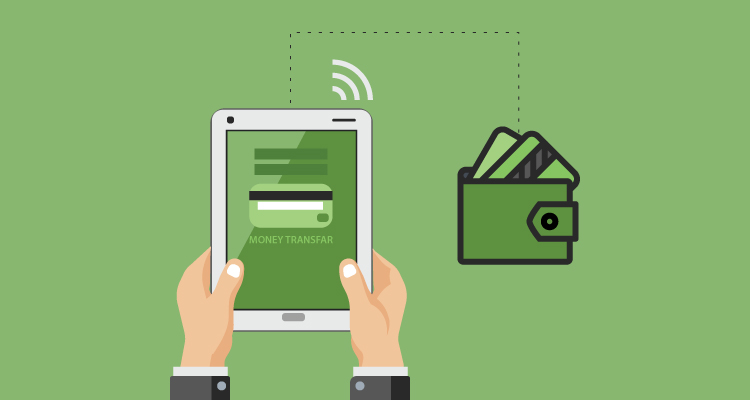Checks and cash are relics in the payment industry. With an influx of alternatives and the steady climb in people using their smartphones to purchase goods and services, it’s clear that mobile payments will become the preferred payment method in the very near future. That means we can expect to see some exciting and innovative developments that will make mobile payments more convenient and secure over the next couple of years, such as these eight trends in mobile payments.
Table of Contents
Toggle1. More Tech Giants Will Offer ‘Pay’ As a Feature
Apple Pay, Samsung Pay, and Android Pay are already here. As Ilya Pozin points out in Forbes, while they have similar features, “they aren’t one-to-one copies of each other.” They’re meant to be payment platforms that will integrate with their respective companies, such each ‘pay’ service offers something unique for their users.
While we shouldn’t expect major tech companies to become industry leaders in the payment industry, we can expect them to “support the continued growth of the larger platform and vision.”
2. Mobile Will Replace Countertop Checkout
That’s not to say that traditional countertop checkout is going to completely disappear anytime soon. It means that we’re going to see the lines between online and offline payments continue to blur. For example, Starbucks, Taco Bell, and Domino’s have already experienced success with offering apps and mobile payments where customers can complete a purchase without having to stand in-line.
More recently, Walmart announced Walmart Pay, which should be nationwide by early 2017.“The Walmart app was built to make shopping faster and easier,” Neil Ashe, president of Walmart Global eCommerce, told Wired. “Walmart Pay is the latest example—and a powerful addition—of how we are transforming the shopping experience by seamlessly connecting online, mobile and stores for the 140 million customers who shop with us weekly.”
3. Social Will Become a Bigger Commerce Player
This shouldn’t come as a shock. Social media apps like Facebook, YouTube, and Instagram are consistently listed as among as the most popular mobile apps. Because of this, social networks have already begin to implement ‘buy now.’ This trend will continue to have a major impact on mobile payments
Instagram, as pointed out by Kimberlee Morrison of SocialTimes, has the most potential since it can “reduce the number of clicks it takes for a user to get to the point of purchase, it makes tracking sales on mobile much easier for brands.”
4. Messaging Apps Will Become Commerce Channels
When you consider that approximately “fifty-six percent of respondents prefer making purchases from within an app to making them on a mobile website” and messaging apps like Facebook Messenger and WhatsApp have more than one billion monthly users, it’s easy to see why this will become a opportunity to become commerce channels. In fact, the messaging app Line already allows users to connect their accounts with a credit card.
5. Blockchain Technology Will Change the Game
There’s been a lot of discussion surrounding the blockchain. If you’re not familiar with the blockchain, it’s simply a database that records every bitcoin, or any digital coin, transaction. This will affect mobile payments possibly in several ways. For starters, it will remove third parties from being involved in the payment process. This will lead to more secure transactions. Since people are concerned over the security of mobile payments, this could help put them at ease.
Another way that this will improve security is being introducing tokens. In a nutshell, ‘tokenisation’ will replace credit card numbers with digital tokens that will be used to complete payment transactions.
6. Biometric Authentication Will Ease Security Concerns
Speaking of security, the Federal Reserve found that “Concern about the security of the technology was a common reason given for not using mobile banking or mobile payments (62 percent and 59 percent, respectively, of non-users).” If ‘tokenisation’ doesn’t help ease security concerns, then biometric authentication will step-in.
Anticipate new biometric processes, such as finger vein scanners, voice recognition, pulse detection, and keystroke detection, will become more significant as way to increase security and make mobile payments more convenient.
7. Mobile Payments Will Go Beyond Smartphones
According to eMarketer, approximately two in five internet users wbe using a wearable device by 2019. That means that we won’t just be making proximity mobile payments with our smartphones. It will will expand to devices like smart watches, bracelets, rings, and other wearable devices to complete purchases and send or receive funds.
8. Mobile Will Impact the Banking Industry
With the increase of use in mobile banking, it’s not surprising that fewer people are stopping in physical bank locations. Instead, people will use their mobile devices to deposit and withdraw funds. They’ll also fill-out loan applications and even open a checking or saving account on their smartphone. While branches won’t completely disappear, expect more traditional banking to be conducted mobily.
Additionally, there will also be an increase in “marketplace banking” or “fintech banking” who will offer services like digital wallets, credit cards, and even remote bank accounts.













